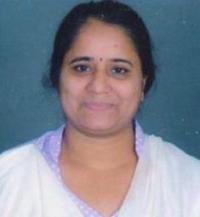
Today, March 22, is observed as World Water Day.
India, as a nation, has attempted to solve issues concerning water availability, accessibility, and affordability.
Since its establishment in May 2019, the ‘Jal Shakti’ ministry has endeavoured to understand the nature of water problems in India. It has significantly shifted from the conventional approach to water planning and placed emphasis on maximising water usage efficiency.
Ambitious projects, like ‘Namami Gange’ and National River Conservation Plan (NRCP), Atal Mission for Rejuvenation and Urban Transformation (AMRUT), and the Smart Cities Mission of the Ministry of Housing and Urban Affairs have additionally been conceived.
Water governance processes over the last few years has emphasised the challenge of obtaining drinking water in rural and urban locations.
According to the Jal Shakti ministry, 58.36% of rural families received tap connections as a result of these plans. The NRCP, meanwhile, claims to have covered dirty sections of 34 rivers in 77 towns scattered across 16 states, and has attempted to make this river water drinkable. Notably, India, suffers from not just unpredictable but also constrained water availability and thus achieving such milestones is difficult.
For water victim Indians, the ‘provided’ graph of growth itself is a reason to celebrate. However, when claimed reasons are tested, findings may be unpleasant.
This latter part is signified by two important bodies of India, the Niti Aayog and the Central Ground Water Board. Both, while drawing attention to the problem of water stress in India, have pointed toward a ‘decline’ in the water table. For instance, in July 2022, the Central Ground Water Board declared the loss of 122-189-billion-meter cubes of groundwater. The Board has pointed out that 230-billion-meter cubes of groundwater are drawn out each year for irrigating agricultural lands in India and this has mainly caused the loss.
Also read: As NITI Aayog Looks into Water Trading, it Should Know the High Costs it May Bring
Niti Aayog endorsed these worries and stated that due to this loss, by 2040, overall 70% of the freshwater sources in the country would be found to be lost or contaminated. The Aayog has revealed that many parts of India, including water-abundant regions like Kerala and Punjab, report severe water quality problems, causing drinking water vulnerability. A recent demand by Balbir Singh Seechewal to inspect polluted water bodies and resources in Punjab, indicates that everything is not matching the claims of the ministry.

Representative image of a leaking tap. Photo: Vinoth Chander/Flickr (CC BY 2.0)
Recently, the documents released by Niti Aayog and Jal Shakti ministry, present that to address two identified problems – extraction and pollution of water bodies – the Union government is considering to propose some significant changes in the irrigation and water management processes. As part of the proposal, the Union government may recommend, encourage or rather insist that farmers switch from water-guzzling crops like rice, wheat, and sugarcane and focus on the production of water-intensive crops like millets, pulses, and oilseeds. Perhaps, this idea will get scholarly attention as implementations of it intend to preserve and maintain the level of underground water. However, since food habits in India are also attached to cultural beliefs and identity, it is doubtful if farmers will agree to compromise with the production of the most popular crops.
Another pipeline suggestion is a neoliberal stand in water management. Since principles of neoliberalism are fundamentally based on cost-benefit analysis, a commonly expected outcome could be the government justifying uses of water for development over life. However, despite the majority position of the Union government, it would be intriguing to observe if India’s robust constitutional setups will allow the government to implement the idea of neoliberalism. If it does, those with exceedingly low purchasing power will undoubtedly suffer and the government will have to redefine the Bharatiya Janata Party government’s catchphrase, ‘Sabka Saath Sabka Vikas’ or ‘Together with all, development with all’.
Until financial inequality is tackled, success in the water department will not reach all.
Also read: In Photos: For Thousands of Mumbai Residents, Water Supply Is a Distant Dream
In addition to financial considerations, social inequalities will be disruptive to the concept of water justice. Incidents that occurred only last year in Rajasthan’s Jalore district, where a Dalit boy died after having been beaten for drinking from a clay pot, and Jodhpur district, where a Dalit man was killed for drawing tubewell water, are sufficient to comprehend that there is a lot to do.
Since water governance procedures in India are largely bureaucratised, a very common issue is that water issues and their solutions are typically determined primarily in technical terms. Conventional bureaucratic patterns of water administration conveniently avoid humanitarian approaches to the problem. The process loses the necessary sensitivity towards water issues. This further widens the gap between what is truly happening and what is being observed.
To reduce this gap, the definition of “water’s unavailability, inaccessibility, and affordability” needs to be expanded in water governance. Beyond statistics and technology, there is a larger need to comprehend water problems and examine the entire situation from a humanitarian angle. By 2040, when India’s population reaches its peak of 1.5 billion, it will be challenging to balance all of the nation’s water needs.
Dr. Deepti Acharya is the author of the book Water and Public Policy in India, Routledge, London and New York, 2021, and working as Assistant Professor in the Department of Political Science, Faculty of Arts, the Maharaja Sayajirao University of Baroda, Vadodara, Gujarat.






